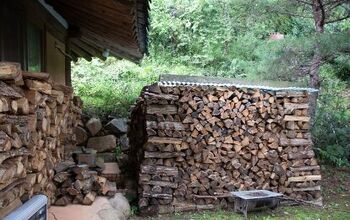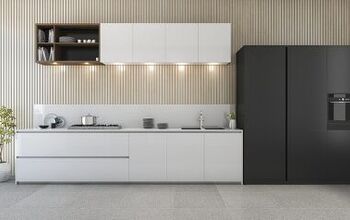How Many Motion Sensors Do You Realistically Need?

The continued boom of home security options has made it easier and easier to keep a home safe, and the owner informed. Smart technology allows you to see who is ringing your doorbell with a video on your cell phone.
You can even get alerts when a motion sensor goes off on your property. Motion sensors are a great way to light up dark paths, and alert you to potential danger. But how many motion sensors do you really need to install?
The number of motion sensors you need will vary based on several key factors, including the home’s size, design and the number of entry points. Not all motion sensors have the same sensor radius, so the brand of motion sensor will also dictate how many you need.
Keep in mind more sensors might mean increased coverage, but it might also cause more frequent (and unnecessary) alarm notifications.
Some homes require only a few motion sensors to ensure ample security and coverage. Others require twice as many or even more. There are all sorts of factors that determine exactly how many motion sensors you need in your home.
As you start to decide how many motion sensors you need, start considering why you are installing motion sensors, and what your areas of focus are.
I Need Motion Sensors For My Home, But How Many?
As you embark on the journey of improved home security, safety and awareness, you will inevitably find yourself deciding where you need motion sensing technology. At the bare minimum, you should have a motion sensor at all points of entry to your home. You should also have a motion sensor light on any pool area or private backyard area.
It is also standard to have at least one motion sensor on a driveway. So the odds are, if you have at least two doors, a backyard and a driveway, you should have at least four quality motion detector lights. But with that said, you also need to consider why you are installing motion sensors. After all, there is more than one reason for this.
Motion Sensors For General Safety And Precaution
One reason for motion sensors is to trigger lights. Motion detecting lights are often needed for dark driveways and potentially tricky pathways. They also provide light at entry doors when looking for the right key. If this is your reason for motion sensors, you should map out all your potentially hazardous and dark outdoor spaces. This will help you plan on how many motion sensors to install.
Motion Sensors For Home Security And Alerts
The other main reason people want to install motion sensors is for security reasons. Motion sensors can trigger alarms, or perhaps phone alerts (in addition to a spotlight). If you are adding motion sensors for security reasons, you need to consider more than just dark driveways and entryways. You need to make sure all your home’s vulnerabilities are covered.
Factors That Impact How Many Motion Sensors You Need
Home Size
Your home’s size (and its yard) is one of the biggest factors to consider when it comes to the number of motion sensors you need. In general, the rule is the larger the home, the more sensors you need.
This is simply because motion sensors only cover so much space accurately. So, more square feet means more motion sensors. Larger homes also tend to have more vulnerabilities, which may further impact how many sensors you need.
Home Layout
The design and layout of your home also impacts how many motion detectors you need. For example, a long winding driveway might need two or even three motion sensors, while a shorter straight driveway only requires one.
The same is the case for angular homes with lots of grooves and nooks. These grooves and intricacies might be great for aesthetics, but they might block the motion sensors. This means you need more sensors in these angular nooks to prevent blind spots.
Your Reasons For Installing Motion Sensors
As we mentioned above, the reasoning behind your decision to add motion sensors also impacts how many you require. If you are installing motion sensors to light up vulnerable dark areas, then you need a finite and lower number.
If, on the other hand, you opt for motion sensors for security reasons, you will likely need more. This is because there are more security vulnerabilities in a home than simply entry doors and driveways.
Motion Sensor Quality And Strength
Not all motion sensors are created equally. If you purchase a motion sensor with a sensor radius of 50 feet, you will need fewer than if you purchase a Blink system, which has a radius of only 20 feet. So, make sure you are opting for the right motion sensors for the radius you are looking to cover.
Number Of Doors And Windows
In the end, the number of (and location of) all your home’s vulnerabilities will have the strongest impact on how many motion sensors you need. If you have lots of decorative large windows on all four corners of your home, you are likely going to need more sensors than if the entire walls of your home lacks windows. The same is the case for those who have no backyard to secure versus a vast pool area with several entry points.
Places Where You Should Install Motion Sensors
Driveways
Driveways are important locations for sensor lights. They alert you when anyone is coming up your driveway, which is key for all sorts of reasons. They also tend to trigger a floodlight, which allows you and any other car to easily navigate the driveway without riding off track and causing damage.
Front And Rear Doors
In addition to having a motion sensor light or two on the driveway, the next no-brainer spots are at your front and rear door. These are the main access points to your home. This allows you to know when someone is at your door. Sensors also light up these areas, making it easy for you to open your door and feel safe and seen while doing so.
Areas With Windows
Any walled areas with windows should have a motion sensor on them. This is particularly important if you are installing these sensors for security alert purposes.
Pool Or Deck Areas
Pool and deck areas should always have at least two motion sensors. This helps prevent unwanted guests from making themselves comfortable in your pool or backyard leisure area.
Inside Hallways And Entryways
You might even consider putting one or several motion sensors inside your home. If you do, this will increase the number of motion sensors you need, as you will likely need them in major hallways and atriums to ensure total security.
How Many Motion Sensors Does A Typical Home Need?
So, now that you understand that there are all sorts of variables and factors to determine how many motion sensors you need, you probably want to also know the standard number of motion sensors for a typical single-family home. After all, having that average number will help you gauge if you have too many, or not enough.
On average, you should have a minimum of one sensor for your garage, one for all entry doors (assume there are two in most homes), one for the backyard area, and one on each side of the home. This means at minimum, without any motion sensors inside your home, you need at six to eight motion sensors to cover the outside of your home. If you have a larger home or yard, that number will quickly shoot up to at least 10.
Summing Up How Many Motion Sensors You Need
The number of motion sensors depends on several factors. You need to consider the size of your home and its yard, as well as its design. It is also critical to consider whether you want motion sensors for lighting purposes or for security.
Regardless, the number of motion sensors you need also varies based on the number of entry doors and windows your home has. Keep in mind, however, that the more sensors you install, the more likely you will constantly get triggered sensor warnings. So try to place smartly using fewer sensors.
Related Guides:

Tom Gaffey is an expert writer who currently resides in Washington D.C. Tom has a passion for real estate and home improvement writing, as well as travel and lifestyle writing. He lived the last twelve years in Hawaii where he worked closely with luxury resorts and event planners, mastering his knowledge of aesthetics and luxury products. This is where he found his passion for home improvement and a keen interest in DIY projects. Currently, Tom resides in Washington D.C, and also working on his debut fiction novel.
More by Tom Gaffey












![Finishing Basement Without Permit [Is It Really Illegal?]](https://cdn-fastly.upgradedhome.com/media/2023/07/31/9070078/finishing-basement-without-permit-is-it-really-illegal.jpg?size=350x220)
![10 Best Electric Pressure Washers – [2022 Reviews & Guide]](https://cdn-fastly.upgradedhome.com/media/2023/07/31/9070600/10-best-electric-pressure-washers-2022-reviews-guide.jpg?size=350x220)













![How To Reset A Whirlpool Cabrio Washer [In 5 Easy Steps!]](https://cdn-fastly.upgradedhome.com/media/2023/07/31/9076531/how-to-reset-a-whirlpool-cabrio-washer-in-5-easy-steps.jpg?size=350x220)